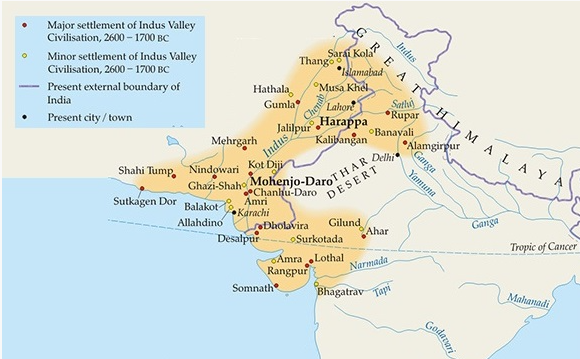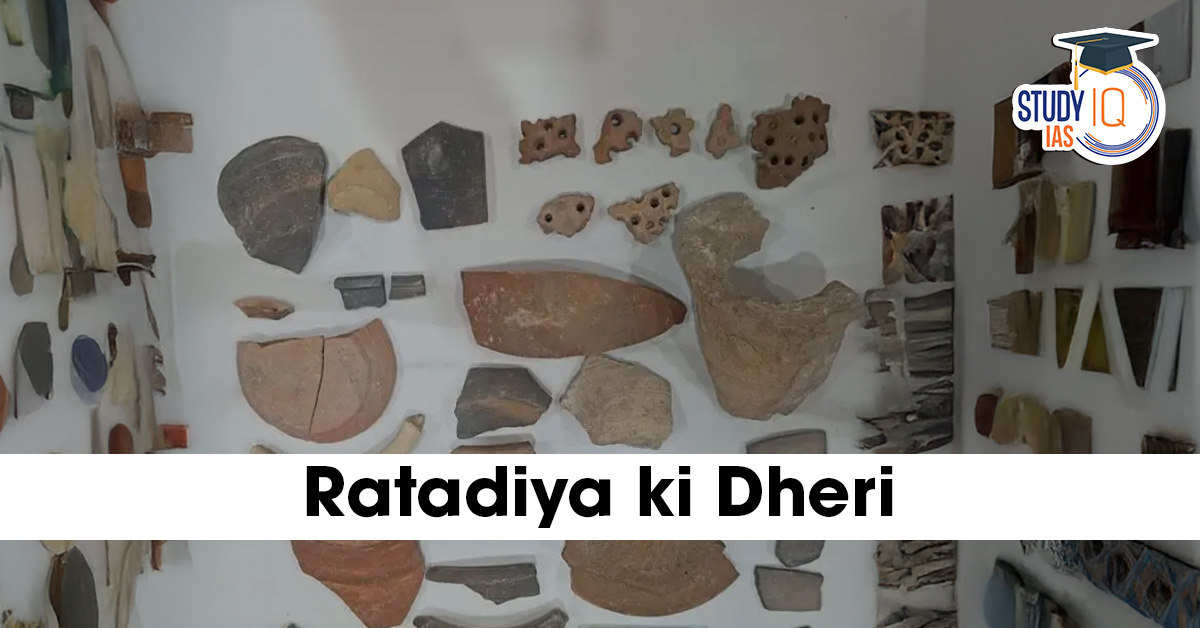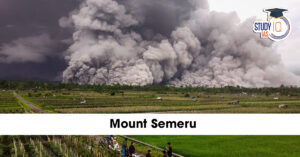Table of Contents
In a groundbreaking archaeological discovery, a new Harappan site has been unearthed at Ratadiya Ri Dheri in the Jaisalmer district of Rajasthan. This site, dated to the Mature Harappan phase (2600–1900 BCE), is the first known Indus Valley settlement found in the arid region of western Rajasthan. Discovered by renowned archaeologist Dilip Kumar Saini, this finding is significant in reshaping our understanding of the geographical spread and adaptability of the Harappan civilization.
What is the Ratadiya Ri Dheri Harappan Site?
The site at Ratadiya Ri Dheri has been identified as a rural Harappan settlement, believed to be part of the broader Sindh Harappan cultural and trade network. Located in the arid region of the Thar Desert, this settlement indicates that the Indus Valley people were not only city-builders but also adapted to diverse ecological settings, including extremely dry environments.
Key Features of the Discovery
1. Dating to the Mature Harappan Phase (2600–1900 BCE)
The site has been firmly dated to the Mature Harappan period, the peak phase of the Indus Valley Civilization known for urban planning, trade networks, and cultural sophistication.
2. Geographical Significance
This is the first Harappan settlement discovered in Rajasthan’s arid zone, expanding the known territorial reach of the Indus Valley Civilization further west into the desert, and highlighting its adaptability and resilience.
3. Connection to Sindh Harappan Network
The site’s location and material culture suggest strong ties with the Sindh region of present-day Pakistan, one of the cores of the Harappan civilization. This discovery strengthens theories of interconnected trade and communication across vast regions.
Artefacts Found at Ratadiya Ri Dheri
The excavation yielded a rich variety of artefacts, which confirm its identity as a Mature Harappan site:
-
Red Ware Pottery: Including bowls, pots, and jars — typical of Harappan ceramic styles.
-
Clay and Shell Bangles: Signifying trade with coastal regions and cultural practices of adornment.
-
Terracotta Objects: Likely used for ritualistic or domestic purposes.
-
Stone Tools and Implements: Indicating advanced craftsmanship and daily utility tools.
-
Wedge-shaped Bricks: A hallmark of Harappan architectural engineering.
-
Kilns (Brick-making Furnaces): The design of the kilns is notably similar to those found at Kanmer (Kachchh, Gujarat) and Mohenjo-daro (Sindh, Pakistan), suggesting a sophisticated and possibly industrialized brick-making activity.
Importance of Kilns at the Site
The presence of kilns is particularly significant. Their structural resemblance to kilns at major Harappan urban centres points to a well-planned industrial process, even in rural or remote settlements. This suggests that economic activities like brick-making and possibly trade-related production were not confined to urban centres alone.
Implications for Harappan Civilization Studies
The discovery of Ratadiya Ri Dheri compels historians and archaeologists to rethink the boundaries and strategies of the Indus Valley people:
-
Adaptation to Arid Zones: The settlement proves that Harappans could survive and thrive even in harsh desert climates, possibly using water management techniques or seasonal occupation.
-
Rural-Urban Linkages: It emphasizes the importance of rural settlements in supporting urban centres like Dholavira, Mohenjo-daro, and Harappa.
-
Economic Activities Beyond Urban Areas: The kilns and artefacts indicate specialized crafts and production units in rural locations, redefining the understanding of Harappan economy and society.
Why This Discovery Matters
This discovery is not just a local archaeological success; it is a milestone in Indian and South Asian ancient history. It adds new dimensions to the knowledge of one of the world’s oldest civilizations and showcases the technological and cultural resilience of the Harappans.
For students, researchers, and UPSC aspirants, this finding:
-
Strengthens understanding of Harappan rural life
-
Highlights regional diversity within the Indus Civilization
-
Emphasizes technological sophistication even in peripheral settlements
UPSC Relevance
This topic holds immense relevance for UPSC Civil Services Examination, particularly in the following sections:
-
GS Paper I – Ancient Indian History: Indus Valley Civilization, Harappan culture and settlements
-
GS Paper I – Geography: Human adaptation to environmental challenges
-
GS Paper III – Science and Tech in Ancient India: Ancient industrial practices like kiln construction and brick-making
-
Prelims: Location-based questions, artefacts, and period classification
Other Indus Valley Sites

Conclusion
The discovery of the Harappan site at Ratadiya Ri Dheri in Jaisalmer is a remarkable addition to the archaeological map of India. It not only stretches the physical boundaries of the Indus Valley Civilization but also deepens our understanding of its socio-economic complexity, rural economy, and environmental adaptability. As more such sites come to light, the picture of ancient India becomes richer and more nuanced.


 Mount Semeru Eruption 2025: Indonesia’...
Mount Semeru Eruption 2025: Indonesia’...
 Indira Gandhi Peace Prize 2025: Michelle...
Indira Gandhi Peace Prize 2025: Michelle...
 India Re-Elected to Codex Alimentarius C...
India Re-Elected to Codex Alimentarius C...

























